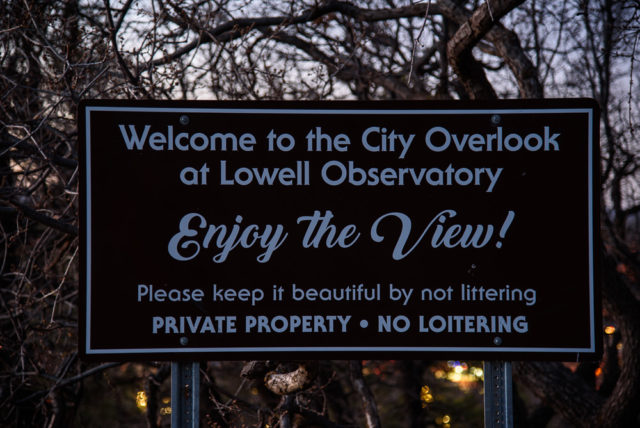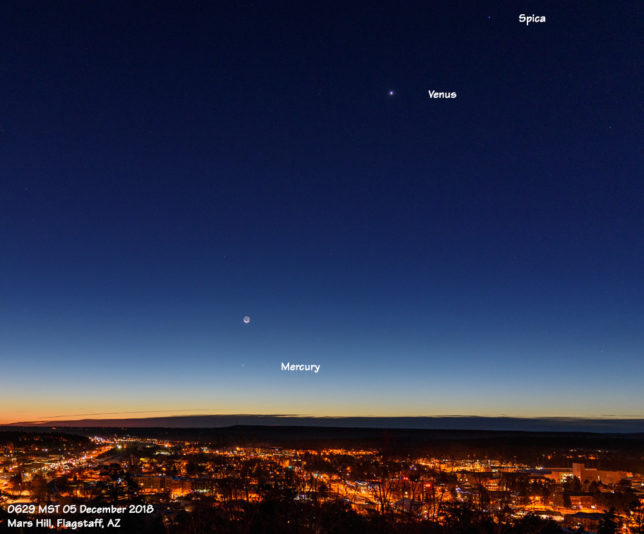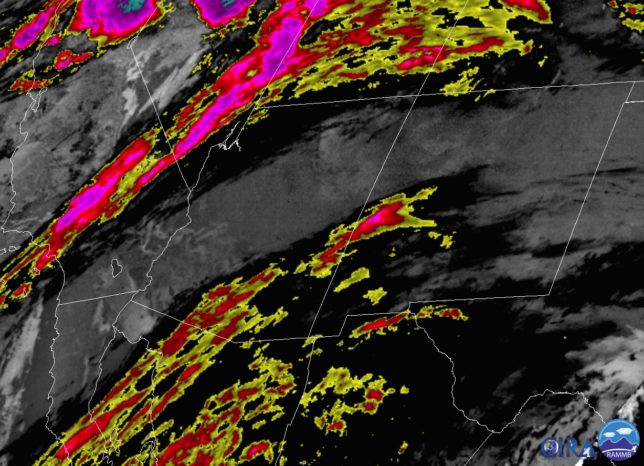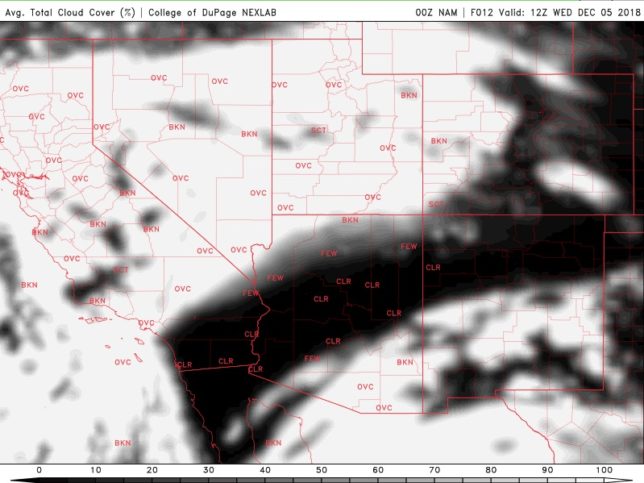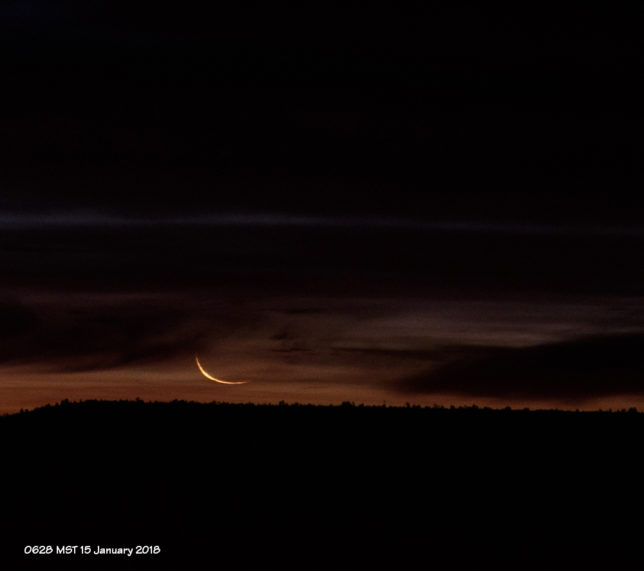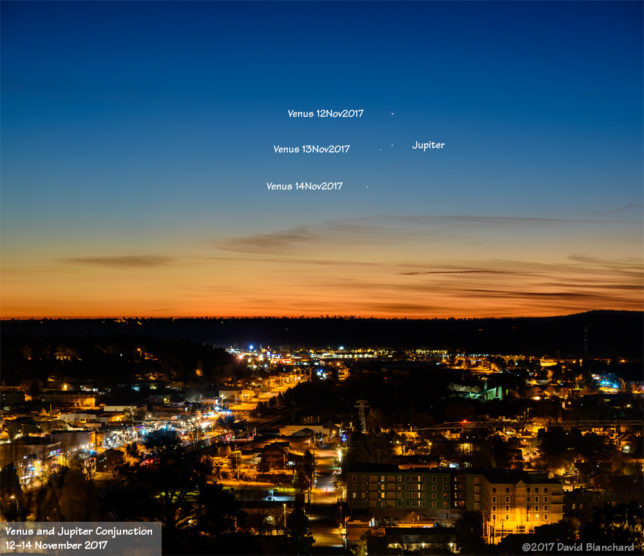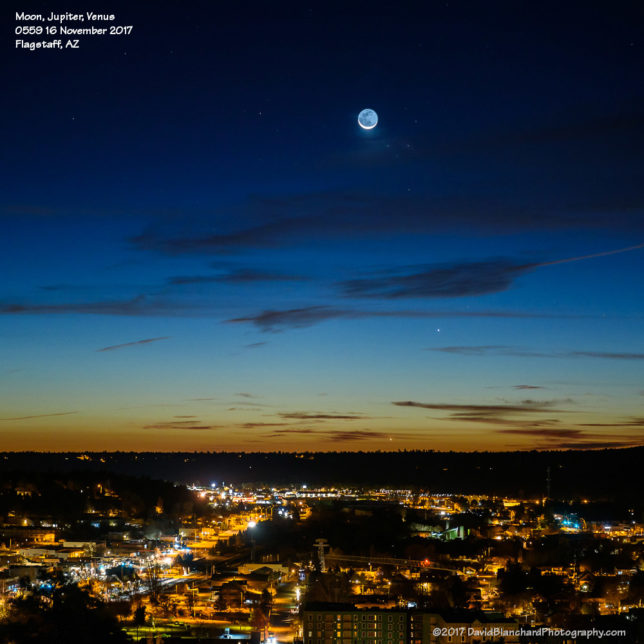There are currently four planets easily visible in the morning sky: Jupiter, Venus, Mars, and Saturn. For a few days they have been fairly evenly spaced and in a line sloping upward from the east to southeast. Next week the slim crescent Moon will join them but the spacing will be a bit different.
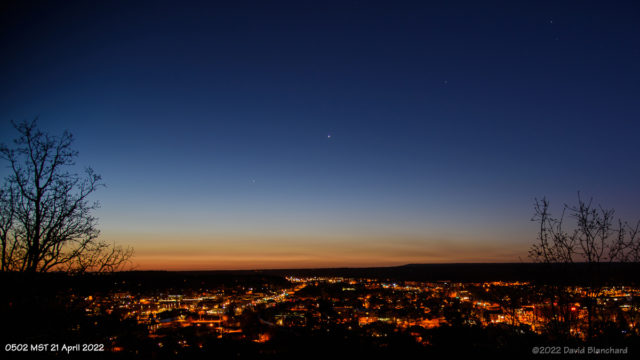
Here is a shot from about 0502 MST 21 April 2022. Twilight was already brightening the horizon so perhaps I should have been there a half hour earlier. Also shown is a screen shot from Stellarium showing the four planets with an overlay of the field of view from a 24mm lens.
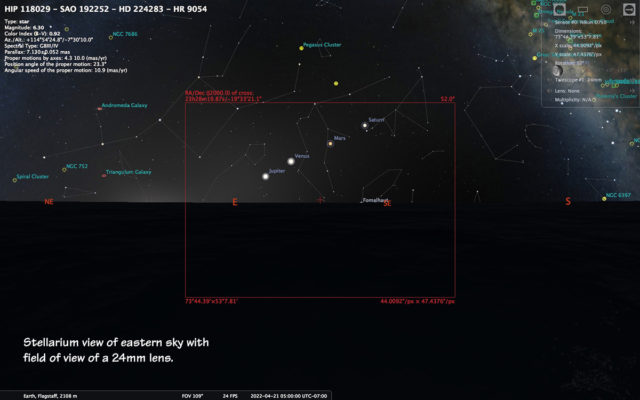
This was taken from the “City Overlook at Lowell Observatory” which is really just a small, designated pulloff of the road to the observatory. It’s nice to know that the City recognizes the value of this location and is working to preserve it.
